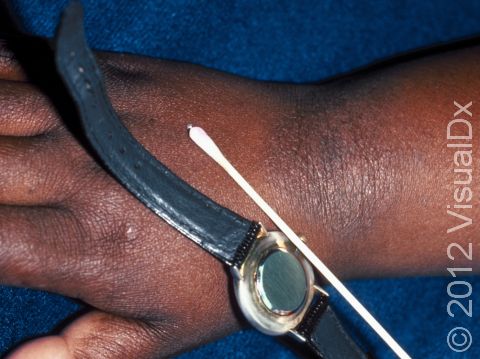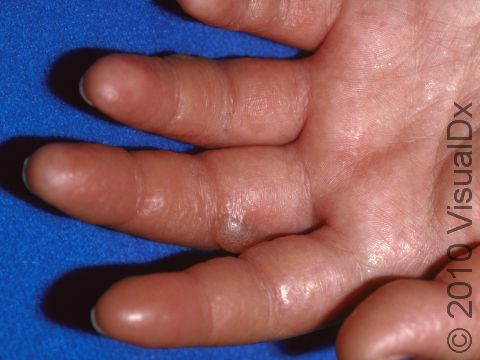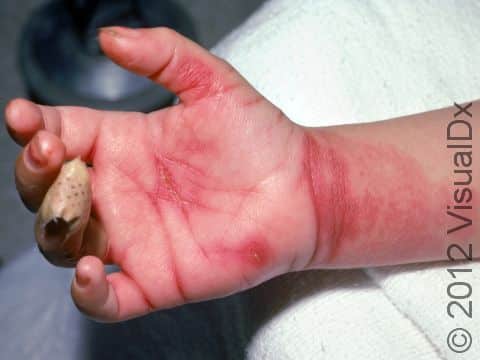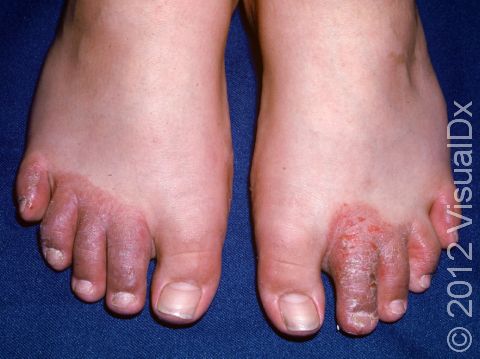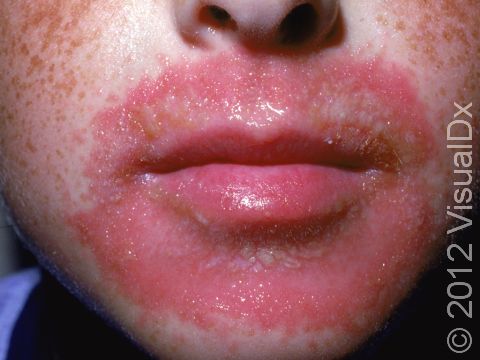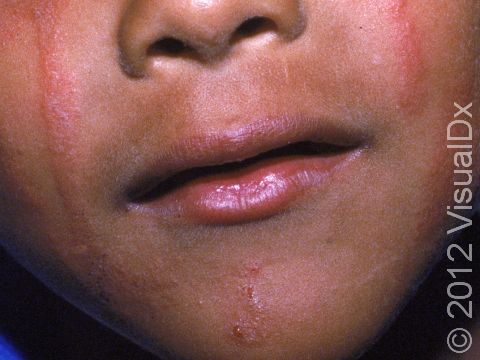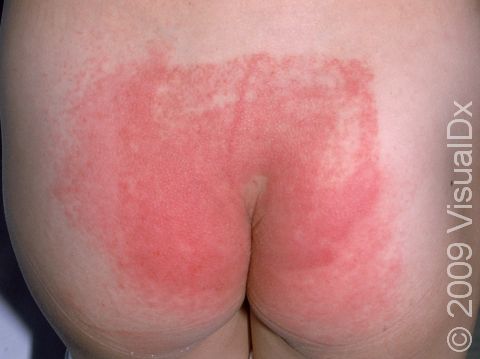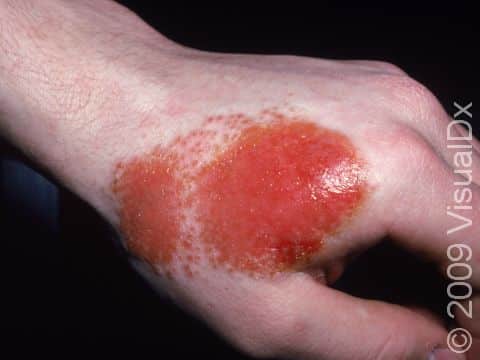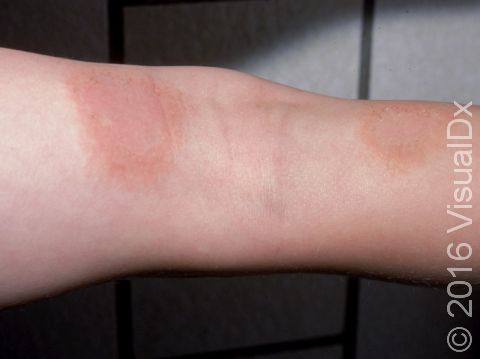Allergic Contact Dermatitis (Pediatric)
Allergic contact dermatitis is an allergy to a substance (the allergen) touching the skin. The reaction occurs 48–72 hours after exposure. Common allergens are nickel, chromates, rubber chemicals, and neomycin (an antibacterial medication).
- Nickel is found in jewelry, belt buckles, and metal closures on clothing.
- Chromates are found in shoe leathers.
- Rubber chemicals are found in gloves, balloons, and elastic in clothes.
- Neomycin is common in triple-antibiotic first-aid ointments such as Neosporin® (and generic versions of Neosporin) as well as other combination preparations containing other antibacterials and corticosteroids, as well as other topical ointments, creams, and lotions. It may also be found in eye medications, eardrops, and some vaccines.
- Common allergen-containing products include cosmetics, soaps, dyes, and jewelry.
- The most frequent triggers are fragrance, nickel, neomycin, formaldehyde, lanolin, and other chemicals that are common in the environment.
- Poison ivy is a frequent cause and is discussed separately.
Who's At Risk?
Allergic contact dermatitis can occur at any age, but it is more common in adults, with women affected more often than men.
Signs & Symptoms
Allergic contact dermatitis may occur anywhere on the body. Exposed areas such as the arms, legs, and face are most often affected. Scaly red-to-pink sheets of skin (plaques) and blisters may appear. Individual lesions have distinct (well-demarcated) borders and often assume shapes with straight edges and right angles. Eyelid swelling frequently occurs when the allergen is transferred from your child’s finger to his or her eyelid. Affected areas are usually severely itchy.
When the dermatitis is long-standing, thickened plaques develop, and infection with bacteria may occur.
Self-Care Guidelines
- Avoid whatever is triggering the dermatitis.
- Apply cool water compresses to cleanse the area, and then apply over-the-counter 0.5–1% hydrocortisone cream twice daily.
- Calamine lotion and oral antihistamines (chlorpheniramine or diphenhydramine) may reduce the itching.
Treatments
- Treatment is aimed at preventing contact with the allergen. Symptoms may be controlled with oral antihistamines.
- Medium-potency topical steroids may be prescribed for rash occurring on the arms or legs (extremities) or trunk.
- Mild-potency topical steroids may be prescribed for use on the thinner skin of the face and skin-fold areas.
- Use the lowest potency topical steroids for the shortest period of time necessary.
- The doctor may do patch testing for allergies if the cause is not known.
Visit Urgency
See your child’s doctor or a dermatologist for evaluation if the rash does not heal or keeps coming back, and it does not improve with self-care measures.
References
Bolognia, Jean L., ed. Dermatology, pp.223, 239, 253-256. New York: Mosby, 2003.
Freedberg, Irwin M., ed. Fitzpatrick’s Dermatology in General Medicine. 6th ed. pp.1109-1110, 1313, 2326. New York: McGraw-Hill, 2003.
Last modified on October 10th, 2022 at 8:27 pm

Not sure what to look for?
Try our new Rash and Skin Condition Finder
